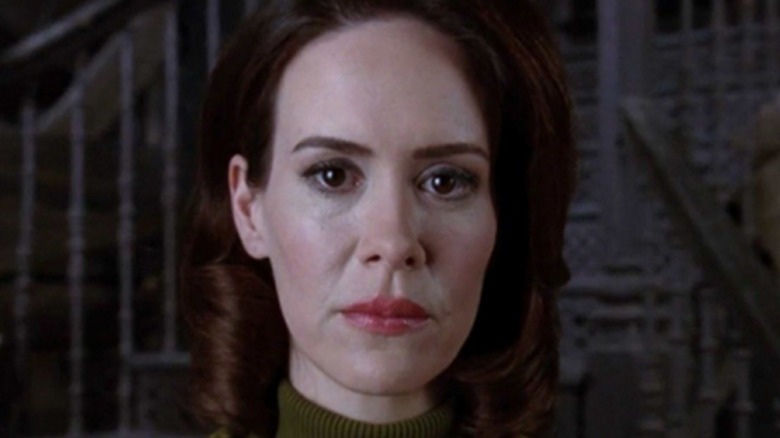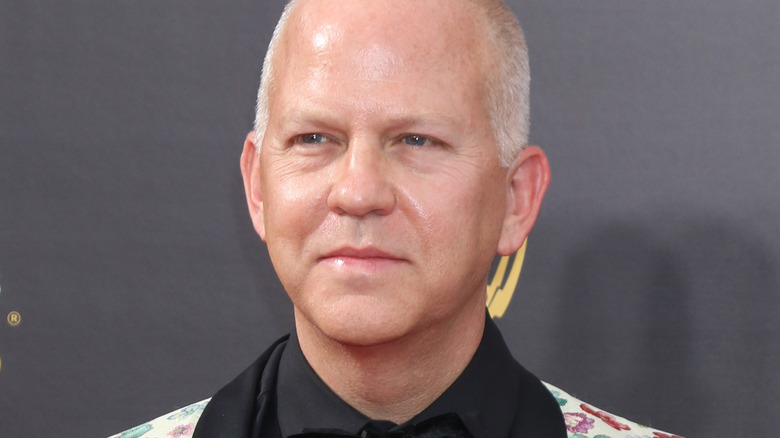Why American Horror Story Season 10 Will Be Split Into Two Parts
When "American Horror Story" returns for its 10th season later this year, fans will find a return to the familiar — as well as some changes.
For one, this upcoming season, which will run with the title of "Double Feature," will mark the highly anticipated return of actors Sarah Paulson and Evan Peters, two fan-favorite "American Horror Story" veterans who both took a break from the FX horror series last year. There are some new faces joining the two "AHS" veterans, including Macaulay Culkin and Paris Jackson. Perhaps the biggest change, though, will be the show's format.
On March 19, 2021, when "American Horror Story" co-creator Ryan Murphy announced the title of the series' 10th installment on his Twitter, it prompted many questions — and he soon revealed that the reason for the "Double Feature" theme is that the new season will showcase two stories in one season, marking a major departure from the previous nine seasons. Murphy has, so far, revealed that the first story will be set "by the sea," and the second "by the sand." There's no information, as of yet, about which horror tropes the two mini-seasons will tackle (based on one of Murphy's Instagram posts, maybe vampires?), nor if the stories will be related. However, Murphy and co-creator Brad Fulchuk have managed to interlink all of the preceding seasons' very diverse themes, so it's likely the dual parts of "Double Feature" will intertwine.
However, why will the season be split in two? In fact, there's a deeper reason, that taps right into the roots of horror cinema itself.
AHS: Double Feature honors the horror genre's legacy
The first rationale supporting the split season is found in the title itself, "Double Feature." Now considered a relic, the double feature was once a mainstay of old Hollywood (via The New York Times), originating in the 1930s to counteract declining revenue due to the Great Depression. Simply put, moviegoers could buy one ticket and see two films, typically an A-movie (better production quality) and a B-movie (lower production quality). This is, as you're probably suspecting, the origin of the term "B-movie," which is now connected to lower-budget, genre-themed releases.
Back in the day, the films in a so-called double feature were usually chosen for sharing a subject, theme, director, or lead. During the double feature's heyday, the format became closely linked with horror films, which "American Horror Story" Twitter fan account "AHS-Central" noted after Murphy revealed the title.
The other reason for the change in format for "AHS: Double Feature" was laid out by Ryan Murphy himself. Commenting on his Instagram post revealing the season's title, Murphy said, "It means TWO SEASONS for the fans airing in one calendar year! So double the viewing pleasure." So, in addition to paying homage to the old trend of horror double features, the next season of "AHS" is also Murphy's way of giving fans what they want: more "American Horror Story," sooner instead of later.

